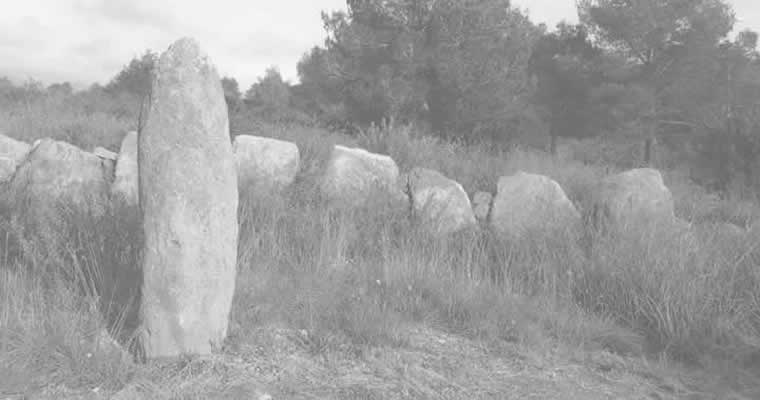
The Menhirs
This expression refers to stone buildings. Saint-Raphaël has several of those that can be spotted in different parts of town. Those structures are a reminder that the Estérel region was inhabited as soon as the third millennium before our era.”
Dolmens
Dolmens are ancient tombs which vary in size and shape. They consist of vertical slabs and are sometimes enclosed above ground. They can be covered by vegetation or stone with the entryway of the tomb oriented towards the setting sun. Saint Raphael has three confirmed dolmens, the most well- known being the Dolmen of Valescure. This dolmen was erected near what is now the Hotel de Ville and the Golf de Valescure. This site was excavated and found to contain calcified human remains (suggesting a ceremonial cremation), pottery shards, flint chips and two flint arrowheads among what were most likely the remains of a funeral offering.
Menhirs
A menhir is a single upright prehistoric stone monument, similar to a stele. Saint Raphael has many examples of these stones dating back five thousand years.
Menhirs, most likely contemporary to dolmens, were monoliths erected for largely unknown reasons. They are often found on sites that offer few clues to put them a specific archaeological context, especially when they are no longer standing. They can be identified to some degree. Menhirs usually come from a different geologic area than from where they are found. They were hewn and shaped in a specific manner and many have similar engravings.
The oldest known menhir in Saint-Raphaël is the Aire Peyronne. It can be found at the end of the new road, also known as the Corniche Varoise, which heads toward Cap Esterel via the interior. It is marked by a curious constellation of engraved recesses whose significance remains unknown. Another worthy example of menhirs can be found in Veyssieres. Known as the ‘Groupe des Veyssieres,’ the finest of these four menhirs can be found in the gardens of the Archaeological Museum in Saint Raphaël. This stone was carved with the figures of a human and a snake. The other three menhirs remain in situ and stand two meters above the ground.



